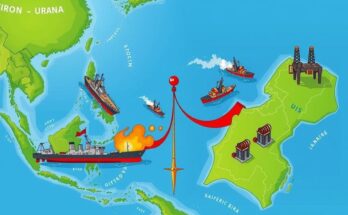Experts highlighted political instability in Bolivia and Peru, marked by ethnic divides and government inefficiencies. McClintock reported low approval ratings for President Dina Boluarte in Peru, while Albro discussed Bolivia’s historical shifts under Evo Morales and ongoing leadership disputes. These issues have significant implications for future elections and regional stability in Latin America.
Experts Robert Albro and Cynthia McClintock discussed the political challenges currently facing Bolivia and Peru during an event at the School of Media & Public Affairs. Hosted by the Alexander Hamilton Society and moderated by Nicolas Novoa, the conversation highlighted the legitimacy and leadership crises in both nations, emphasizing their ethnic, geographic, and class divisions.
McClintock explained that Peru struggles with significant political and ethnic tension, further complicated by regional disparities. Currently, President Dina Boluarte’s approval rating stands at a mere 9 percent, reflecting dissatisfaction with governmental operations. The political turmoil escalated following the impeachment of former President Pedro Castillo after a brief and controversial tenure.
Albro remarked on Bolivia’s complex political landscape, where about 70 to 80 percent of the population identifies as indigenous. He noted that Evo Morales’ presidency marked a significant shift, empowering previously marginalized groups. However, the pursuit of an unconstitutional third term led to instability, prompting his departure and an interim government perceived as illegitimate.
The reinstallment of Luis Arce from Morales’ party only added to tensions within the Movement Toward Socialism as disputes over leadership emerged. This internal fragmentation could weaken their dominance in the upcoming 2025 elections, as rival factions vie for power.
Both experts conveyed that the ongoing divisions in political identities and leadership have left Bolivia and Peru facing uncertainty, with significant implications for regional stability in Latin America.
The political landscape in Latin America, particularly in Bolivia and Peru, is marked by complex challenges that stem from historical ethnic divides and leadership issues. Experts highlight how these factors contribute to instability, impacting democratic satisfaction and governance. As political leaders navigate through tensions inherent in their diverse societies, the implications for future elections remain uncertain, raising concerns about regional stability.
In summary, the political climates in Bolivia and Peru are characterized by significant challenges, including ethnic divides and leadership crises. Experts emphasize the implications of governmental inefficiencies and factional conflicts on regional stability. As both nations approach forthcoming electoral processes, the potential for continued instability remains a pressing concern for Latin American politics.
Original Source: gwhatchet.com




